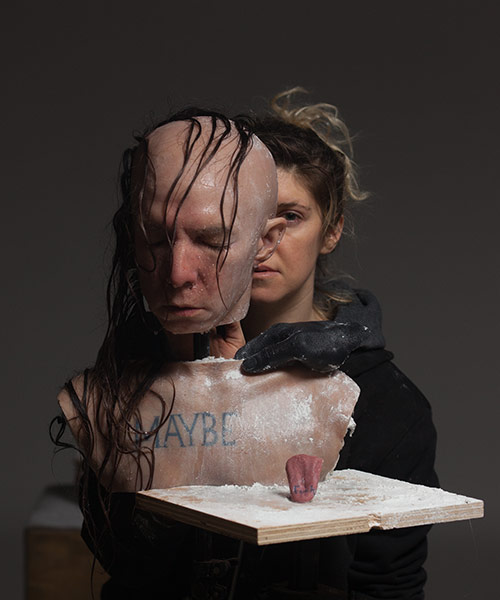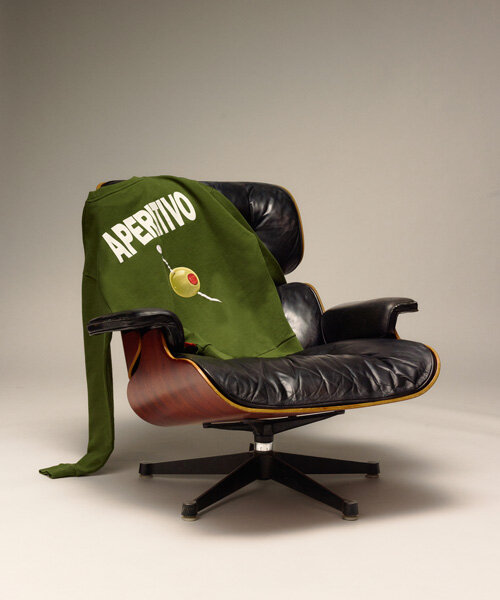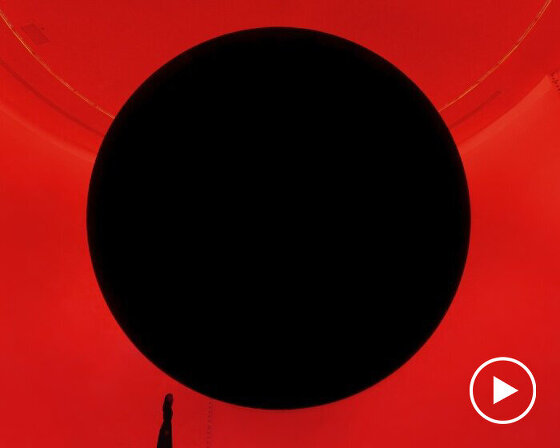there’s a subtle discrepancy between what we think we look like and the reality of our appearance. noses, mouths, eyes and skin are things we all have a fairly intimate relationship with, and changing the way we present these features can seem integral to our sense of identity. but sometimes taking a closer look—at mucus, teeth, genitals, hair, and how it’s all put together—can be a strangely uncomfortable experience. it forces us to confront the less ‘curated’ sides of the human body, and it’s an aspect that artist sarah sitkin is fascinated with.
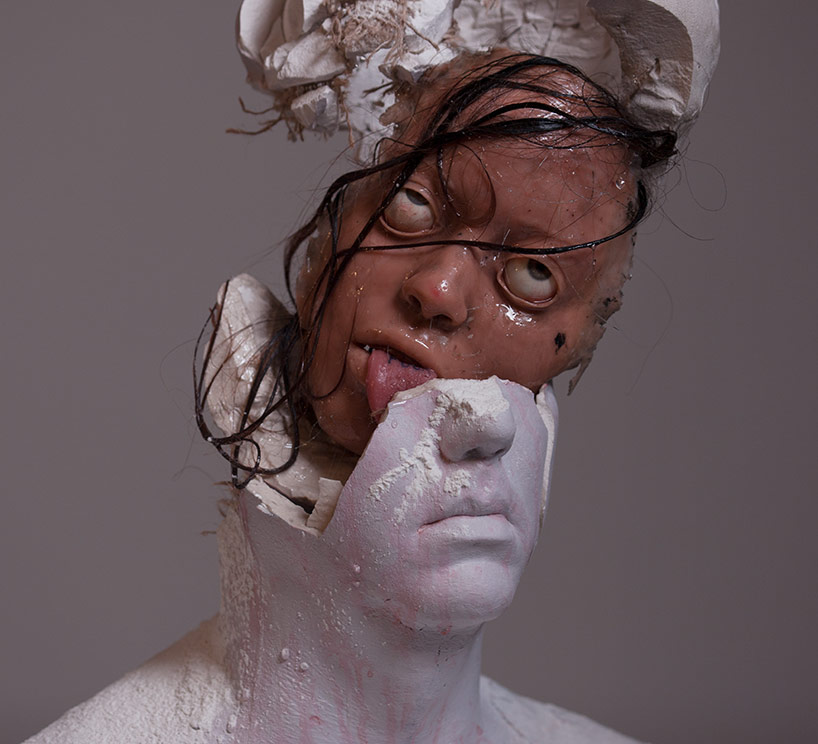
for sitkin, the body itself becomes a canvas to be torn apart and manipulated
all images courtesy of the artist
the work of sarah sitkin is delightfully hard to describe. combining sculpture, photography, SFX, body art, and just plain unadorned oddity, the strange worlds suggested by her creations are as dreamlike as they are nightmarish. combining an eclectic mix of materials, sitkin’s work consists of hyper-realistic molds of the human form which toy with and tear apart the preconceptions we have about our own bodies, and the bodies of those around us.
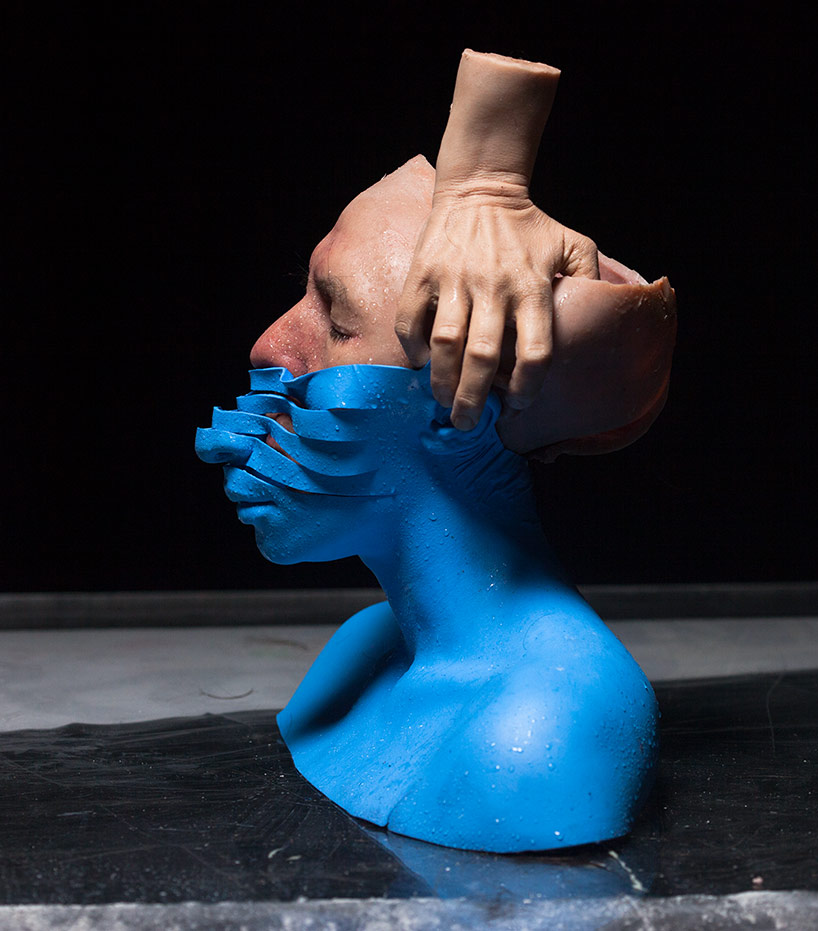
sitkin’s molds toy with and tear apart the preconceptions we have about our own bodies
in deconstructing the body itself, sitkin tests the link between physical anatomy and individual sense of identity. flesh becomes a malleable substance to be molded and whittled into new and unrecognisable shapes. it becomes a medium of storytelling, of self interrogation and of technical artistry. the result is often unsettling but also deeply personal and affecting, and offers viewers new perspectives on the bodies they thought they knew so well. most recently, sitkin’s ‘BODYSUITS’ exhibition at superchief gallery in LA invited visitors to try on the physical molds of other people’s naked bodies, essentially enabling them to experience life through someone else’s skin.
designboom caught up with sitkin recently to talk about the exhibition, as well her background as an artist and plans for the future.
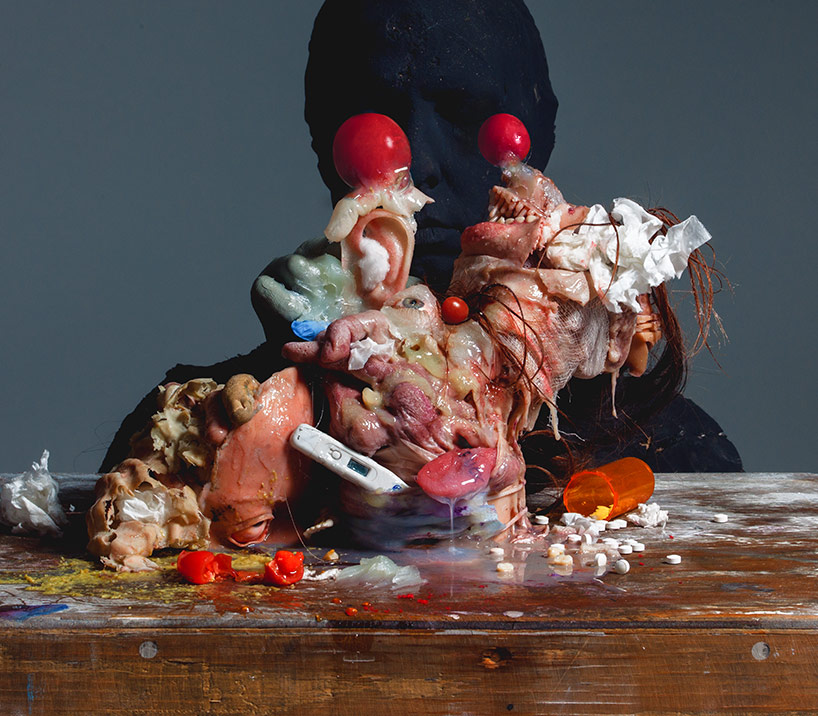
sitkin’s work tests the link between physical anatomy and individual sense of identity
designboom: can you talk a bit about your background as an artist: how you first started making art, where the impulse came from and when you began to make these sculptural, body-focused pieces?
sarah sitkin: I started making art in my bedroom as a kid with stuff my dad would bring home from work. I was extremely fortunate because my father ran a craft shop called ‘kit kraft’ in los angeles, so he would bring me home all kinds of damaged merchandise to play around with. this wasn’t just any craft shop—it was a craft shop in a part of the city that was saturated with movie studios so it catered to the entertainment industry. there were materials the shop carried like dental alginate, silicone, high quality clays, casting resins, plasters, and specialty adhesives that I got to mess around with as a young person because of the shops’ proximity to the special effects studios and prop shops.
I started making molds of my own body in my bedroom using alginate and plasters when I was 10 or 11. my dad also did a face cast of me and my brother when we were kids, and the life cast masks sat on a shelf in the living room for years. these early molding and casting experiments really came to play a huge role in the ideas I would later have as an artist, and got me very comfortable with the materials and process.
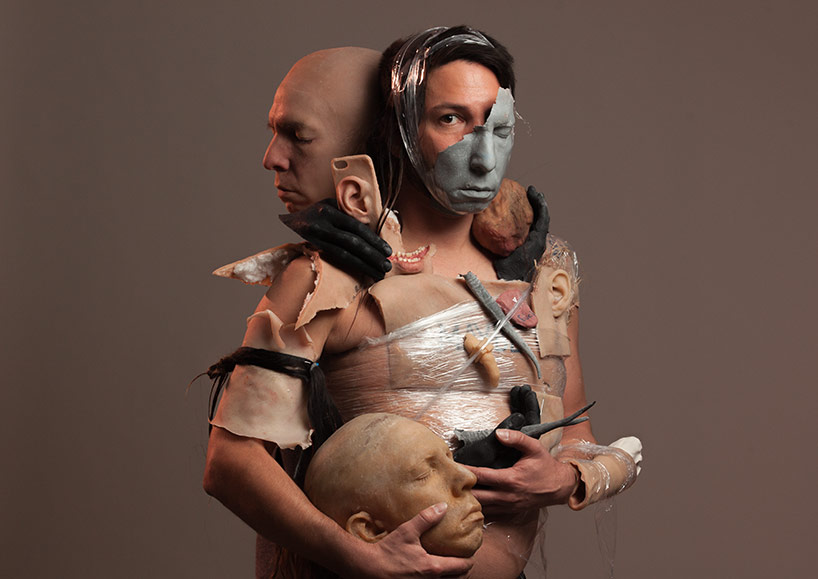
sitkin’s father ran a craft shop in LA called ‘kit kraft’ where she was first introduced to the art of special effects
DB: your work is often described as ‘creepy’ or ‘horror art’, and while there is something undeniably discomfiting about some of your pieces, are these terms ones you identify with personally and is this sense of disorientation something you intentionally set out to try and achieve?
SS: ‘creepy’ and horror’ are terms I struggle to transcend. I use materials and techniques borrowed from special effects, prosthetics, and makeup (an industry built on the foundations of those words) but the concepts I’m illustrating really have nothing to do with gore, cosplay, or horror.
moving a person out of their comfort zone is the first step in achieving vulnerability, and in that space, a person may allow themselves to be impacted. I am deliberately making work that aims to bring the audience to a state of vulnerability.
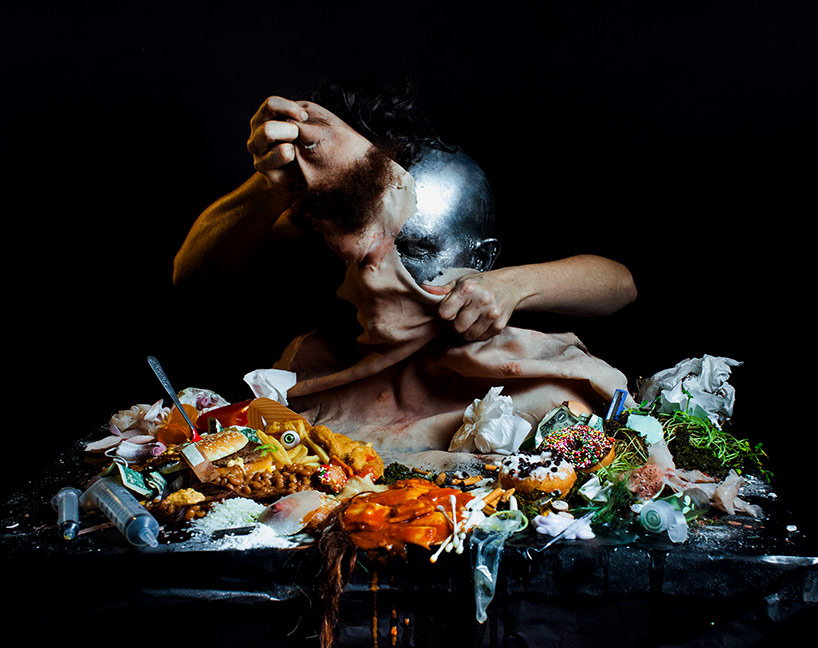
‘I am deliberately making work that aims to bring the audience to a state of vulnerability’
DB: your work kind of eschews categorisation—how do you see yourself in relation to the ‘conventional’ art world? does creating pieces specifically for display in a gallery context change the way you approach a project, or is your process always the same regardless?
SS: I’ve been a rogue artist for a long time operating outside the institutional art world. I never went to art school (in fact I never even graduated high school). I developed my own techniques through experimentation and research, then distributed my work primarily via photographs and video on social media. I’m finally coming into myself as an artist in the past couple of years, learning how to fuse my craftsmanship with concept to achieve a complete idea.
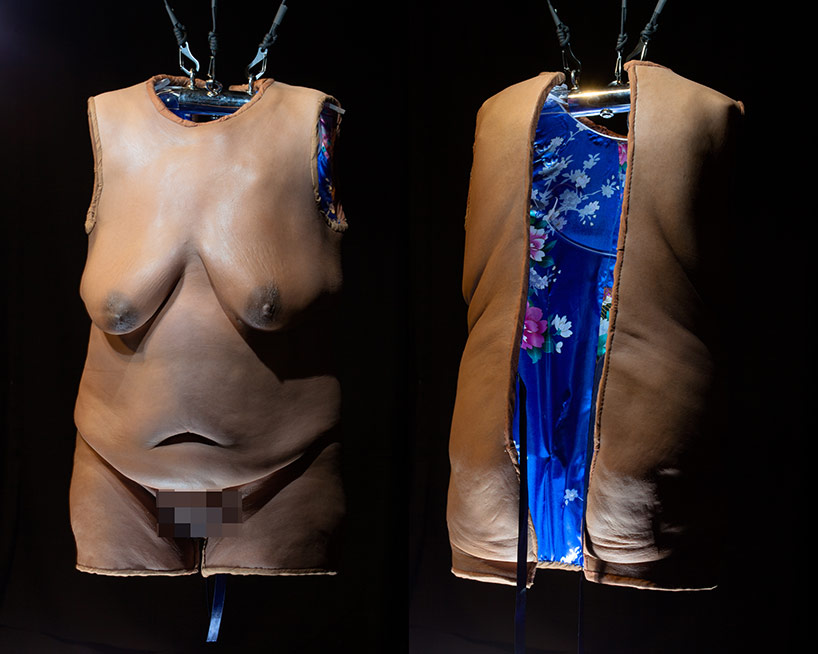
the artist’s most recent exhibition BODYSUITS took place at LA’s superchief gallery
working within gallery walls is actually exciting right now because the opportunity to show work in person opens up the possibility to interact with the public in new and profound ways. by staging an environment for the audience to photograph, it invites them to collaborate. removing the boundaries between the audience and the art allows the experience to become their own. that ownership of experience is so important to eschew psychological blockades, to allow the work to be impactful in meaningful ways
DB: can you tell us about your most recent exhibition ‘bodysuits’? what was the aim of the project, and what was the general response like?
SS: ‘bodysuits’ began as a project to examine the division between body and self. to present a body as separate from the self—as a garment for the self. as part of the project, I do ‘fitting sessions’ where I aid and allow people to actually wear the bodysuits inside a private, mirrored fitting room. in the sessions I’ve experienced a myriad of responses. it can be a very emotional experience.
there were several sessions that had an impact in ways I didn’t foresee; a trans person was able to see themselves with a body they identify with, and solidified their understanding of themselves. a woman chose to wear a male body to confront her fear and personal conflict with it. a young person was able to wear ageing skin to reconnect with the present moment.
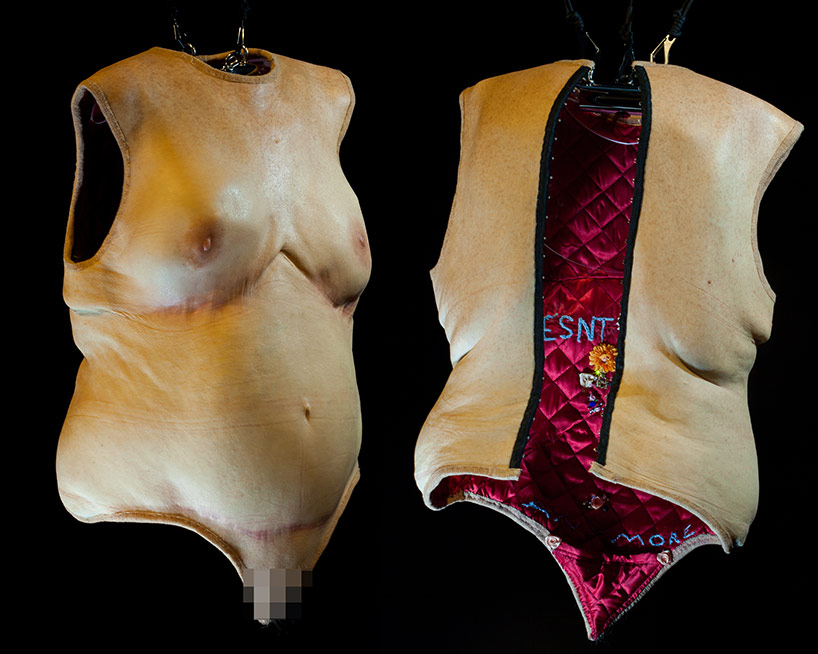
BODYSUITS examines the divide between body and self, and saw visitors trying on body molds like garments
bodies are volatile icons despite their banal ubiquity. I have to sensor the genitals and nipples (I’m so embarrassed that I have to do that) in order to share and promote the project on social media. bodies are politicized and labeled despite the ideals and identities of those individuals, especially when presented without emotional or social markers. navigating the inevitable conflict, listening to opinions and providing emotional support is stressful but it’s part of the responsibility of being an artist making provocative work around delicate subject matter.
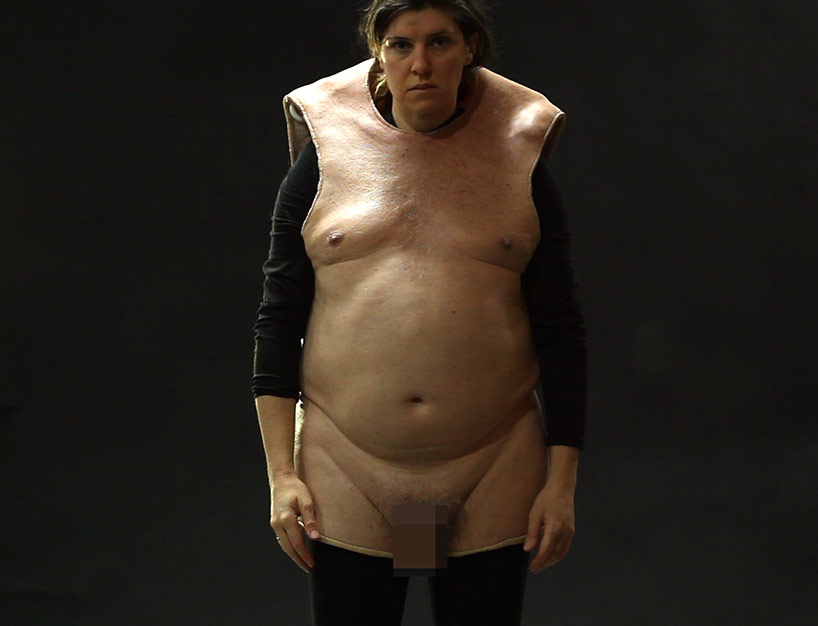
‘bodies are volatile icons despite their banal ubiquity’
DB: your sculptures, while at times unsettling, are also incredibly intimate and display the human form in a really unglamorous way that feels—especially in the case of ‘bodysuits’—very personal. to what extent do you feel the personalities or experiences of your real-life subjects are retained by the finished molds, or, once complete, do you see the suits as standalone objects in their own right?
SS: our bodies are huge sources of private struggle. we sweat, suffer and bleed to try and steer it into our own direction. every day we have to make it our own; tailor, adorn and modify it to suit our identity at the moment. it’s never a bank slate, we constantly have to find a way to work in a constant influx of aging, hormones, scar tissue, disease, etc.
I definitely see the finished suits as standalone objects, however, it’s also so important to approach each suit with care and respect, because they still represent actual individuals. I suppose doing an interview with someone who’s body was molded for the show would be an interesting read.

the sculptures, while at times unsettling, are also incredibly intimate
DB: what is the most difficult part of the human body to replicate, and what is your favorite part to work on?
SS: probably the head is my favorite part of the human body to mold. our brains are programmed to tune into the fine details of the face, I’m hardwired to be fascinated by faces. when I take a life cast of someone’s head, almost every time, the person responds to their own lifeless, unadorned replica with disbelief and rejection. this de-personification allows us to view our physical form without familiarity, and we are confronted with the inconsistency between how we appear vs how we exist in our minds. unable to contort the face itself into its best pose, the replica can feel like a betrayal of truth.
as far as the most difficult body part to replicate…probably an erect penis for obvious reasons.
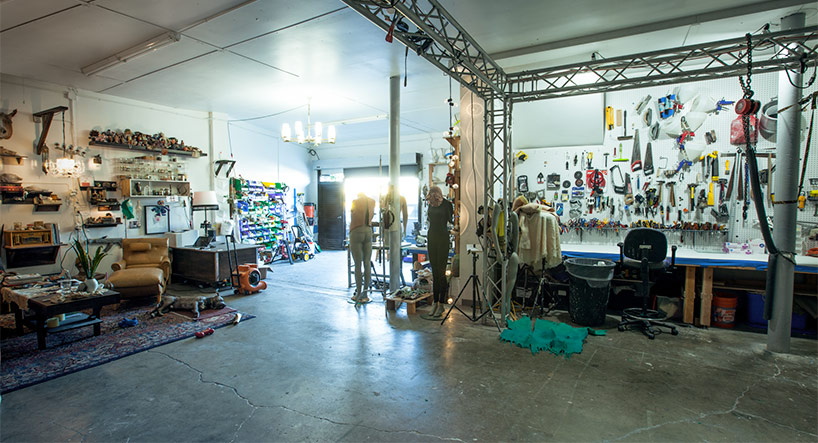
sitkin’s studio is home to a variety of different tools and textiles
DB: I know you’re also really interested in photography and I’m interested in hearing your thoughts on how that ties into the other avenues of your practice. do you see the documentation of your more sculptural work as an extension of those pieces or a separate thing altogether?
SS: like so many people in my generation, photos are an integral part of how we communicate. with the accessibility of photography (everyone has a cameraphone), the ability to curate identity through image-based social media, and the culture of individualism—building experiences that facilitate other people documenting my artwork seems necessary if I want to connect with my audience.
when someone scrolls past a pretty image it is disposable, but when someone takes their own pic, it becomes part of their experience. I try to curate, whenever possible, the environment that my work is seen in, using controlled lighting, soundscapes and design elements to make it possible for others to document my work in interesting and beautiful ways.
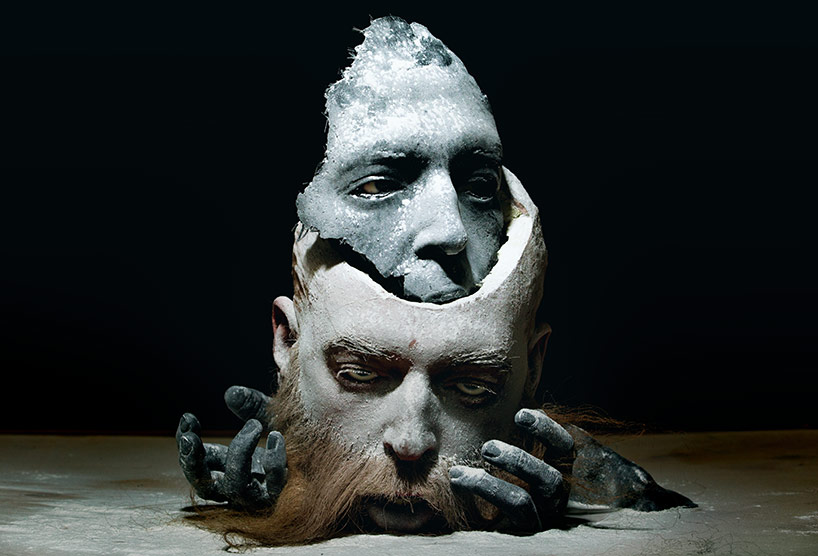
‘I try to curate, whenever possible, the environment that my work is seen in’
DB: who or what are some of your influences as an artist?
SS: what influences me most, (to say what constantly has a hand in shaping my ideas) is my own psychological torment. most all the ideas I have come from concepts I’m battling with internally every day; body dysmorphia, nihilism, transcendence, ageing, and social constructs. I’m pretty out of touch with pop music and culture. I try and insulate myself from trends and entertainment media.
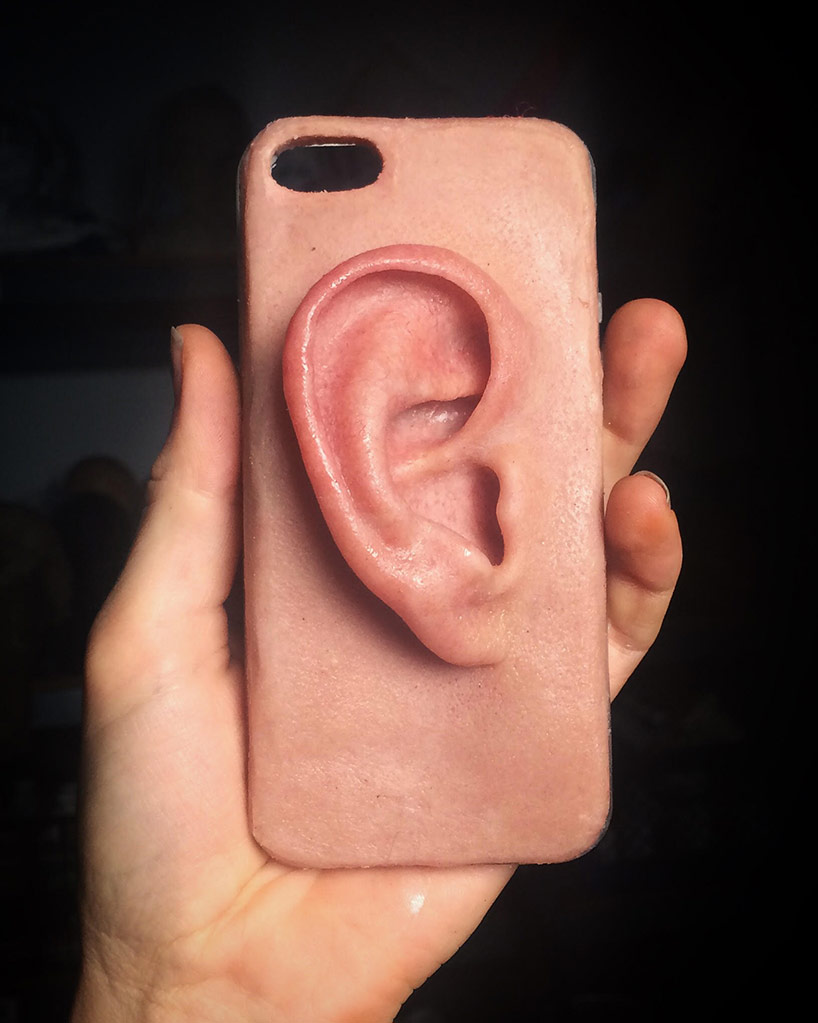
a prosthetic iPhone case created by sitkin that looks, moves and feels like a real ear
DB: are there any mediums you have explored that you’re keen to experiment with?
SS: VR definitely. I imagine a virtual universe where I can create without obeying physics, make no physical waste, and make liberal use of the ‘undo’ button.
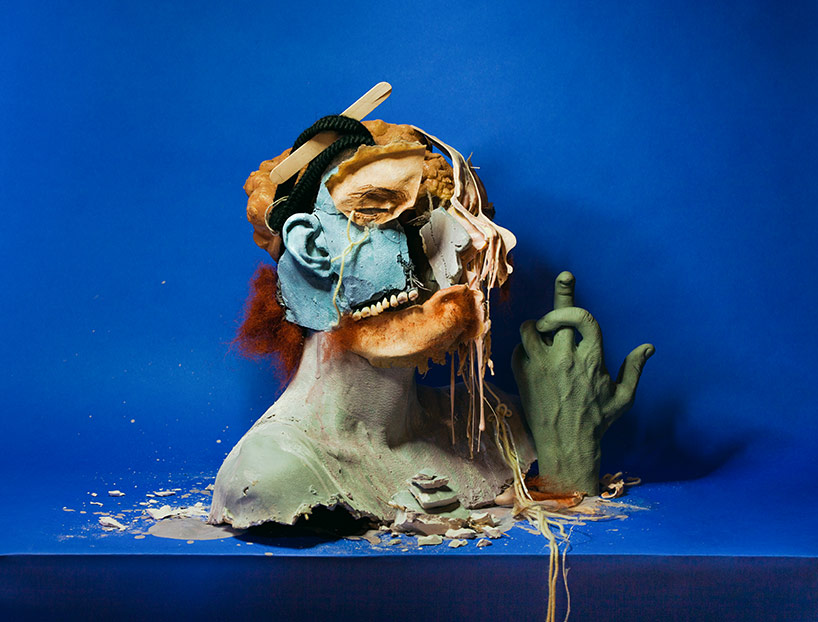
sitkin’s work forces us to encounter and engage with our bodies in new and unusual ways
DB: what’s next for sarah sitkin? are there any upcoming projects you’d like to share with us?
SS: I’m looking to bring the bodysuits show to other cities, next stop is detroit, michigan on may 4th 2018. I have a solo show in december 2018 with nohwave gallery in los angeles, and I’m working on a very special collaboration with my friends from matières fécales.
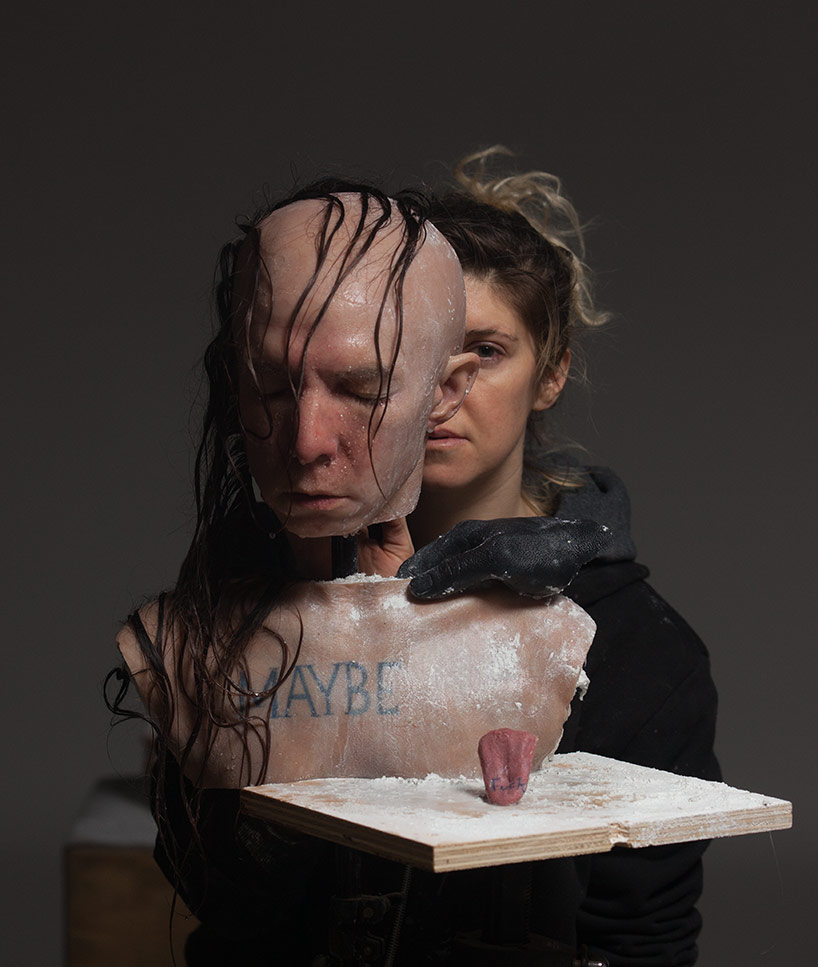
sarah sitkin
